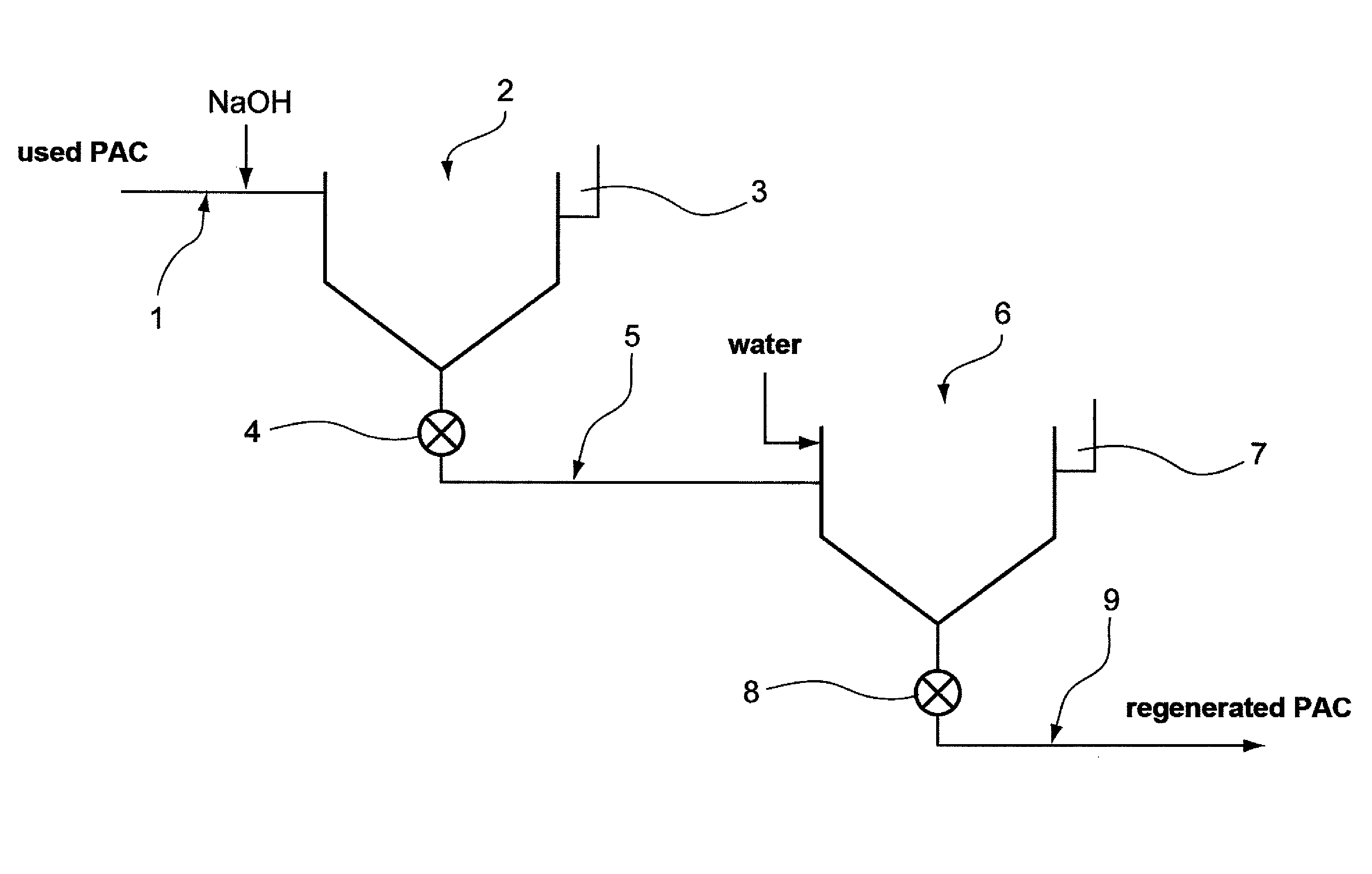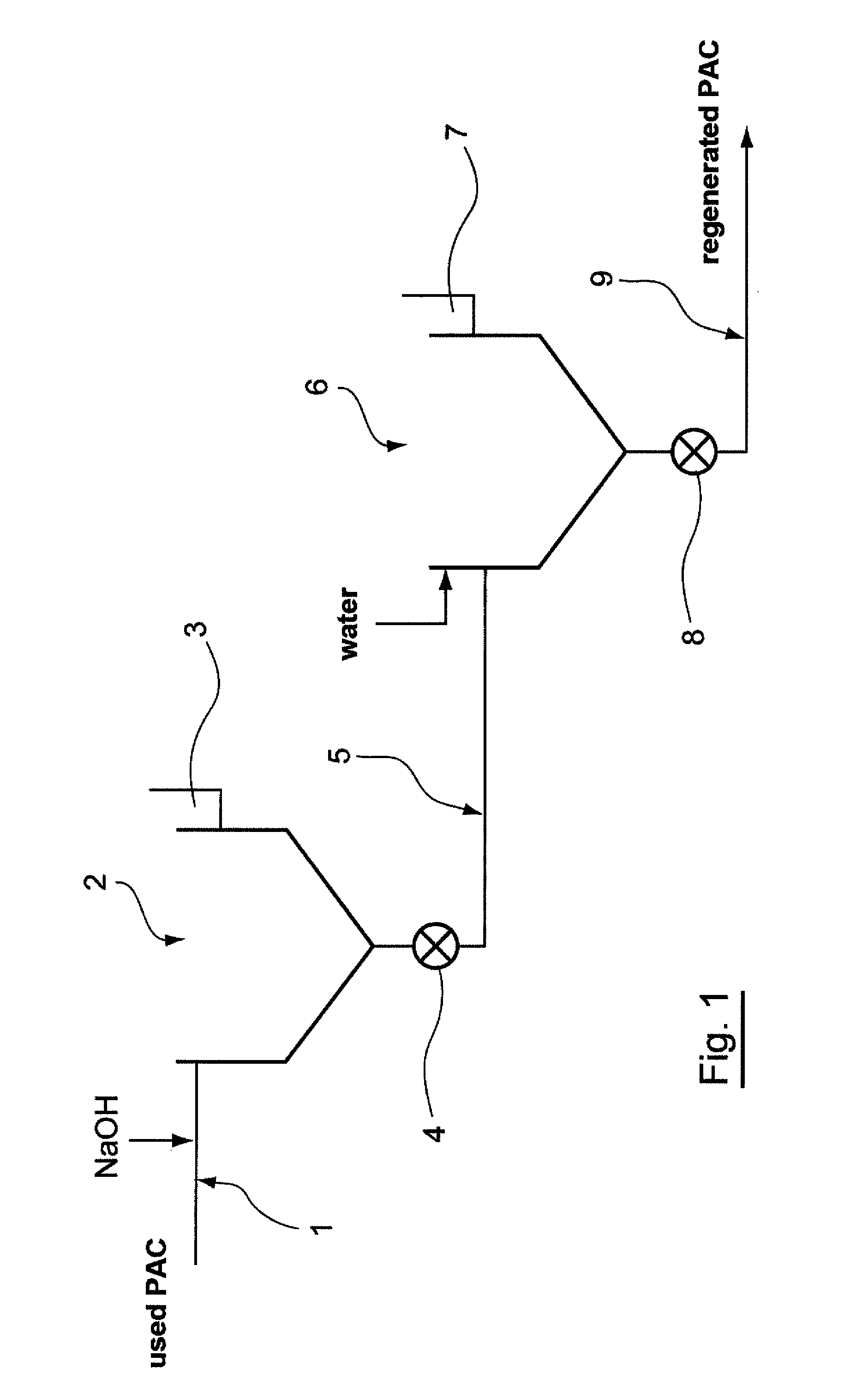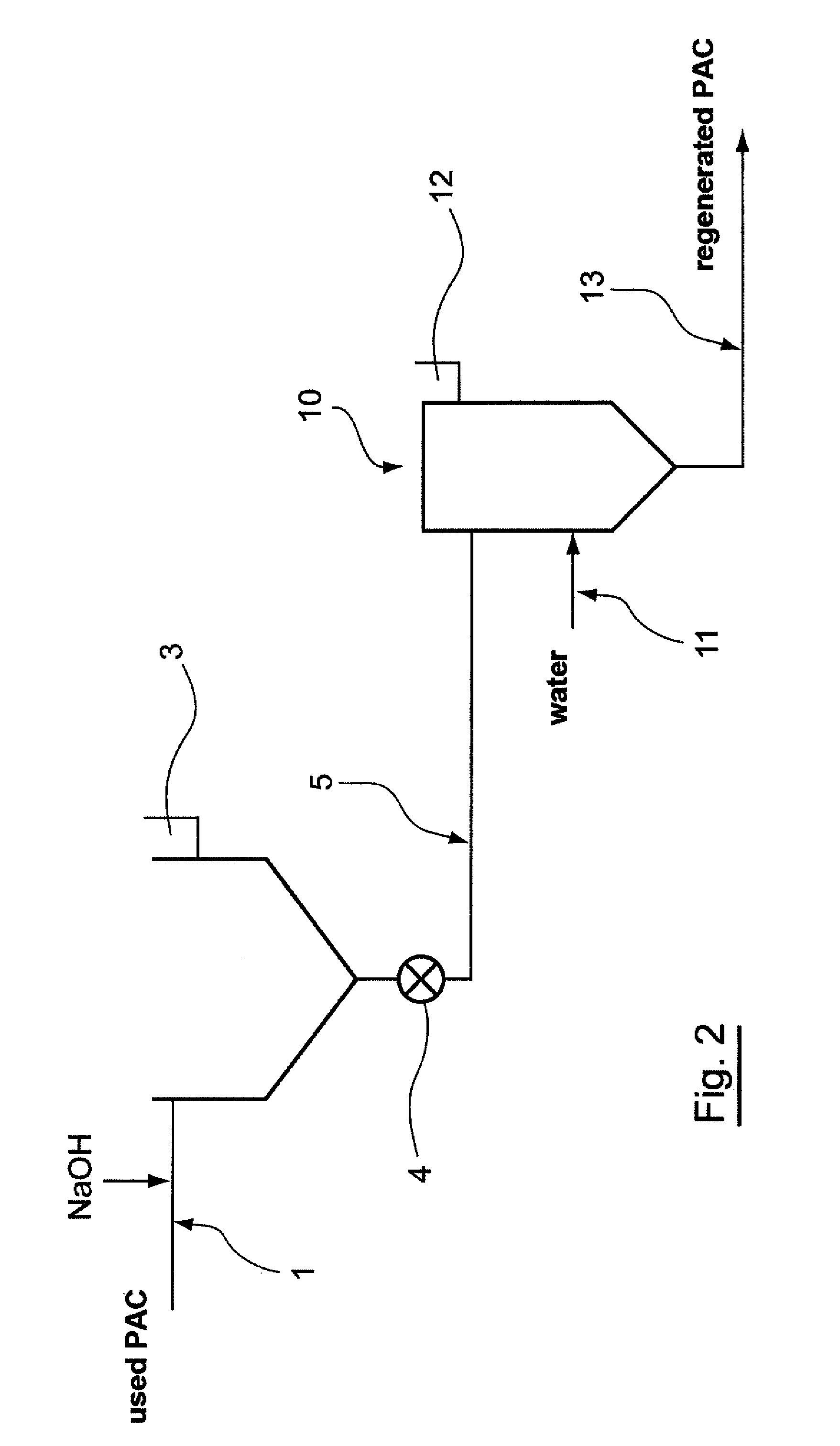Method and installation for treating an aqueous phase containing an adsorbent used material
a technology of adsorbent and aqueous phase, which is applied in the direction of cation exchangers, inorganic chemistry, specific water treatment objectives, etc., can solve the problems of significant reduction of adsorption capacity, significant reduction of the benefit of such a recycling operation, and inability to free used adsorbent materials in hydrocyclones, etc., to achieve easy integration and simple design
- Summary
- Abstract
- Description
- Claims
- Application Information
AI Technical Summary
Benefits of technology
Problems solved by technology
Method used
Image
Examples
first embodiment
[0065]In reference to FIG. 1, an aqueous phase containing used PAC from a water treatment installation is supplied by a channel 1 into a settling tank 2.
[0066]Soda is added to this aqueous phase containing used PAC at the level of the channel 1. This supply of soda enables the pH of the initial aqueous phase containing the used PAC to be increased, and enables a first aqueous phase of which the pH is brought to a value of around 11 to be obtained. This increase in the pH enables the organic matter absorbed on the used PAC to be desorbed quickly and released into the first aqueous phase.
[0067]The sedimentation, which occurs in the settling tank 2, makes it possible to:[0068]obtain an aqueous phase containing the desorbed organic matter and recover said aqueous phase containing the desorbed organic matter in the upper portion of the settling tank 2 in a chute3, and;[0069]obtain a second aqueous phase containing the partially regenerated PAC in the form of sludge capable of being disch...
second embodiment
[0075]FIG. 2 diagrammatically shows a second embodiment of an installation for implementing the method.
[0076]In this embodiment, the second phase containing the regenerated PAC coming from the first settling tank via the channel 5 is supplied not to a second settling tank 6 but to a hydrocyclone 10.
[0077]Classically, this second phase is injected tangentially into said hydrocyclone 10. IT is also provided with a separation fluid consisting of water and supplied into the lower portion of the hydrocyclone 10 by suitable supply means 11 enabling said water to be supplied tangentially into the hydrocyclone 10.
[0078]This hydrocyclone 10 enables the recovery in the underflow of a third aqueous phase free of its organic matter and containing for the most part at least partially regenerated PAC, and in its upper portion 12 an aqueous phase containing the rest of the organic matter.
Alternative Of The First And Second Embodiments
[0079]In an alternative of the first and second embodiments, whi...
third embodiment
[0081]FIG. 3 shows a third embodiment of the technique according to the invention.
[0082]As shown in this FIG. 3, an installation according to this third embodiment includes the series arrangement of two installations according to the first embodiment.
[0083]Thus, in this third embodiment, the third aqueous phase containing the at least partially regenerated PAC, coming from the underflow of the settling tank 6, is supplied via a channel 1′ into a settling tank 2′.
[0084]Acid is added to this third aqueous phase containing used PAC at the level of the channel 1′. This supply of acid enables the pH of the third aqueous phase containing partially regenerated PAC to be reduced, and a fourth aqueous phase of which the pH is brought to a value below 7 to be obtained. This reduction in the pH enables the organic matter adsorbed on the used PAC to be quickly desorbed and released into the fourth aqueous phase.
[0085]As explained above, the desorptions with acid or with soda each lead to desorp...
PUM
| Property | Measurement | Unit |
|---|---|---|
| particle size | aaaaa | aaaaa |
| particle size | aaaaa | aaaaa |
| adsorption capacity | aaaaa | aaaaa |
Abstract
Description
Claims
Application Information
 Login to View More
Login to View More - R&D
- Intellectual Property
- Life Sciences
- Materials
- Tech Scout
- Unparalleled Data Quality
- Higher Quality Content
- 60% Fewer Hallucinations
Browse by: Latest US Patents, China's latest patents, Technical Efficacy Thesaurus, Application Domain, Technology Topic, Popular Technical Reports.
© 2025 PatSnap. All rights reserved.Legal|Privacy policy|Modern Slavery Act Transparency Statement|Sitemap|About US| Contact US: help@patsnap.com



